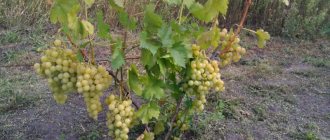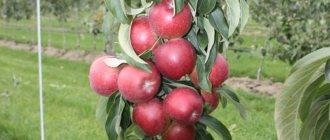Suitable varieties
It is possible to grow grapes in the Southern Urals, but only specially bred frost-resistant superearly and early varieties with a ripening period of 110 to 125 days will grow well and bear fruit here.
Here are the ones that work best:
- Aleshenkin is a table, high-yielding, early variety, ripens in 110-115 days. The vine tolerates frosts down to - 27 ° С. When grown outdoors, cover. The bushes are vigorous, the weight of the bunches can reach 1 kg. Berries are oval, weighing about 5 g, greenish-yellow color, harmonious taste. The root system is poorly resistant to frost, it is recommended to grow on rootstocks. Prone to peas.
- Zilga is a frost-resistant universal variety that ripens in 102-108 days. The berries are dark blue, oval, and taste like Isabella. It tolerates a drop in temperature down to - 27 ° С.
- In memory of Dombkowska - an early technical variety with a high yield, it can tolerate frosts down to - 28 ° С.
- In memory of Shatilov - a versatile, white, frost-resistant, early variety, withstands cold up to -30 ° C. The bushes are medium-sized, the flowers are bisexual, self-pollinated, the bunches weigh 0.6-1.5 kg. The berries are large, oblong, yellowish-white in color. The taste is pleasant, the sugar content is about 20%. Resistant to mildew and powdery mildew.
- Krasa Severa is a white table grape, early ripening, withstands temperatures down to - 26 ° C. The bush is vigorous, the weight of a bunch can vary from 250 g to 900 g. Berries with a tart taste and a sugar content of 14% -17%.
- Crystal is a very early technical grade. Withstands cold up to - 27 ° С ... - 30 ° С. The berries are medium-sized, white or greenish-yellow, ripen in 110-115 days. Harmonious taste, sugar 17% -18%. The variety can withstand temperatures up to - 29 ° С. Resistant to mildew, oidium, gray rot.
- Cardinal is an early table variety, grown in greenhouses in the South Ural climate. Able to withstand frost down to - 18 ° C. The bush is medium-sized, the clusters are large, loose. The berries are large, oval, purple-red in color, with a bloom, ripen in 121 days. The taste is pleasant, with a light nutmeg aroma. Unstable to mildew, powdery mildew, prone to peas.
- Ontario is an early white grape that can withstand frosts at -27 ° C ... -30 ° C. Bushes are medium-sized with bisexual flowers. Clusters are medium-sized, cylindro-conical, and may have a wing. The berries are medium or large, greenish-white, golden. The taste is isable. Resistance to fungal diseases is average.
- Amur White is a versatile medium early variety, berries ripen in 120-130 days. The vine can withstand a drop in air temperature down to -40 ° C. This unpretentious variety is well suited for a novice gardener.

Krasa Severa variety can withstand frosts down to - 26 ° С
Preparation
What must be done first of all so that the "fruit of happiness" flaunts on the site? It is to make the right choice - to choose a variety that is able to calmly endure frosts, so that its ripening period is fast and, of course, suits the taste. To purchase, you need to contact either breeders who have been verified by more than one gardener, or in a nursery of agricultural plants. In such places, you will not only be recommended a more successful variety, but will also help you make the right choice. For example, the city of Uralsk is famous for its Peasant farm (plant nursery). Thanks to selection, a large number of new species of grape shrubs appear every year.They are not only adapted to withstand frost, but also give a good harvest. These varieties include: Crystal, Antario, Cardinal, Triumph and many others. All of them are different in their taste, but they have proven themselves remarkably in the markets of the world. For more than one year, these species have been pleasing the eyes of the inhabitants of the northern part of Russia.
How to plant
Growing grapes in the Urals in the open field is possible in sunny places, on the southwestern and southern slopes. Wind protection must be provided. The vine is planted in the spring, when the soil warms up to + 15 ° C, this is about mid-late June.
Landing is done as follows:
- A hole is prepared from 60 to 80 cm in depth, the diameter depends on the size of the root, approximately it will be about 45 cm.
- The bottom is covered with drainage material 10-15 cm thick, it can be crushed stone, gravel, expanded clay. Some experienced growers advise, instead of stones, to lay drainage from branches at the bottom of the pit.
- After that, lay out the sod land removed when digging a hole, mixed with river sand, compost, three-year-old humus.
- Wood ash is added in an amount of 200 g, superphosphate - 100 g, lime flour - 200 g.
- This is followed by a layer of fertile soil 5 cm thick.
- Then a bucket of water is poured into the pit.
- Allow the prepared hole to settle for some time.
- Before planting, a mound is formed in the pit. If grapes with a closed root system are planted, this item is skipped.
- Place the seedling at an inclination of 45 °.
- Sprinkle with soil, sprinkle with two buckets of water.
- After the water has been absorbed, add a little more earth on top.
- To preserve moisture in the soil and for its better warming, the trunk circle is mulched with straw, covered with black plastic wrap, which attracts the sun's rays. Thanks to this, the water evaporates more slowly, and the ground under the grapes heats up well.
In the spring, the grapes are covered with foil. On sunny days, the temperature under it is about 10 ° C higher than outside, which has a beneficial effect on the grapes, accelerating its growing season and protecting it from recurrent frosts.
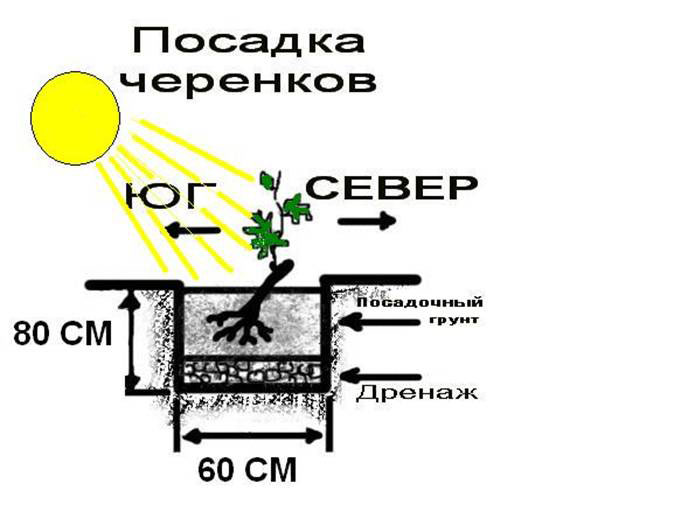

Dark glass bottles with water are driven in around the vineyard, accumulating solar heat, they will give it to the roots of the grapes. What is needed in the conditions of the short and cool Ural summer.
When planting several bushes, a distance of about two meters on average is maintained between them.
Advertisement 1
Delight
Zoned in many regions and in Orenburg, received at VNIIViV them. Ya.I. Potapenko. The best variety of the breeder Kostrikin, the founding variety in the Vostorgov family and many other varieties.
- Early (110-120 days).
- Ripens by the second decade of August.
- The bunch is large (500 g), conical, medium density.
- The berries are large (4–6 g), slightly oval, white.
- Shoots ripen well.
- Sugar - 18-22%, acid - 5-9 g / l.
- Resistance to frost (-25 ° C), high diseases.
- Transportable.
The choice of planting material
When choosing seedlings, preference should be given to zoned specimens. And also make sure that:
- the height was about a meter;
- when the bark is cut, the color of the shoot is green;
- roots are developed, brown, with branches;
- when the root is cut, the color is whitish or milky;
- if the seedling is sold in a container, the soil in it should be moderately moist;
- for a green seedling, the leaves should be light green without spots and bulges;
- the kidneys, when pressed, should not crumble and fall off.
Before planting a seedling with an open root system, the dew roots will need to be removed. Since they develop rapidly, they can take over the main nutritional function, as a result of which the deeper roots atrophy. Surface roots can easily die during the first soil frosts. This is true for the Urals, where the ground warms up unevenly.
Features of the structure and names of parts of the vine
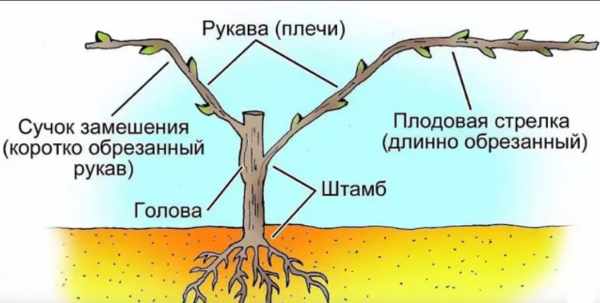

The base of the trunk, which is located underground, is called heel
, roots grow from it.
Stam
- part of the stem up to the first lateral shoot, as in all trees. In grapes, part of the trunk is also underground, ending in the heel.
Head
- a thickening on the main stem, from which lateral shoots extend.
Sleeves (shoulders)
- these are lateral shoots extending from the main stem. And the eyes on them are the same kidneys.
There are terms to remember: fruit arrow and replacement knot.
Fruit arrow
- a long-cut sleeve, on which 8-12 buds are left after trimming.
Replacement knot
- short sleeve, after trimming, 2-4 eyes remain.
Fruit link
- a pair of shoots consisting of a replacement knot and a fruit arrow. We have sorted out all the names, let's move on to the secrets of pruning grapes.
Read also Autumn autumn visit please
Growing grapes in a greenhouse
The temperature in the greenhouse is on average 2 ° C ... 5 ° C higher than outside, this shortens the ripening period by two weeks, which is important for grapes. In addition, there the vine is protected from wind and frost.
When setting up a greenhouse for grapes, the following aspects should be taken into account:
- the height of the structure must be at least 2.5-3 m;
- area of about 30 m2;
- in the conditions of the Urals, Trans-Urals, the greenhouse must necessarily have a foundation in order to avoid freezing of the soil;
- instead of a film, it is advisable to use polycarbonate;
- a strong frame is required, for example, made of steel pipes;
- you also need to take care of the availability of ventilation;
- from the upper tier of the trellis to the ceiling of the greenhouse, leave a distance of at least 40 cm.
In the greenhouse, grapes are planted at a distance of about 0.5 m from its wall. The bushes are located one meter apart. The planting hole is dug about 70 cm deep. Drainage, as when planting grapes in open ground, is required. A prepared mixture of garden soil, river sand and humus is poured onto it in a ratio of 5: 1: 2, plus 100 g of superphosphate.
Advertisement 2
It is better to start growing grapes in a greenhouse with varieties such as:
- Delight;
- Korinka Russian;
- In memory of Shatilov;
- Kishmish Potapenko;
- Beauty of the North.
If the vine takes root, grows well, blooms and bears fruit, then you can move on to more thermophilic and demanding varieties.
Important! When growing grapes in a greenhouse, due to the absence of bees, you need to take care of manual pollination.
In winter, the greenhouse is dug in with snow around the perimeter to prevent the soil from freezing.
A greenhouse for grapes looks like this:


Is it possible to become a breeder
There is nothing easier than trying to take up not only growing grapes, but also becoming a tester of new varieties that can develop and yield crops in cold climates. You may not become a famous winegrower, but it is quite possible for yourself to develop a new variety. To do this, you need to understand the technology of grafting. This will require several types of vines. You can prepare them yourself in the fall or purchase them ready-made. Soak in water for several days, preferably 48 hours. Next, you need to choose a method of vaccination. You can use the root for this, or you can use the lower process, which is closer to the ground. The main thing is that during the vaccination there was a suitable weather, to do everything right, to fix and insulate our cutting at the right angle. Well, northern viticulture is gradually and confidently increasing the number of admirers and those who want to do such a difficult job. We can only wish good luck to everyone who wants to have tasty and juicy fruits.
Care
Planting and caring for grapes for beginners can be challenging. It would be wise to refer to the experience of experienced winegrowers, following the advice below.
Trellis device
In the Urals, a trellis is required for the good development of grapes. On it, the vines are better warmed up by the sun and it is more convenient to care for them. The tapestry can be vertical or two-plane. In the first case, vertical racks made of wood or metal, about 170 cm high, dug in on both sides of the grapes, serve as support. A wire is stretched between them, the first row of which is located at a distance of about half a meter from the earth's surface, and all subsequent ones are 40-45 cm apart.
Two-plane trellis are used for breeding frost-resistant vigorous grape varieties. They consist of two vertical, interconnected crossbeams. Trellis equip in advance, even before planting seedlings. Since if you build a support after, there is a risk of damaging the root system of the grapes. If not metal pipes are used for the structure, but wooden beams, you need to choose hardwood.
Fertilizer
As a top dressing, in the spring, humus or peat is introduced under the bushes. And you can also use specialized fertilizers for grapes. The first three years after planting the grapes are not fertilized, they have enough nutrients that are released from humus and peat, as well as mineral mixtures originally laid in the planting pit.
In the fourth year, feeding is carried out before the beginning of the growing season, during the ovary of fruits, before the vine is sheltered for the winter.
Advertisement 3
Watering
Caring for grapes in the summer in the Urals consists in watering, loosening, pruning, and pest control. The vineyard is watered twice a year: in May, before flowering, and then during the ovary of berries. After irrigation, the soil under the bushes is loosened and mulched with peat and straw. The mulch will prevent weeds from sprouting, keep the soil moist, and when decomposed, it will give nourishment to the grape roots.
Important! For a good harvest on young shoots, stepchildren must be removed.
Pruning and shaping
In the first year, the grapes are not pruned, but only pinched.
In subsequent years:
- In early June, dried branches are removed.
- In the middle of summer, pinching of shoots is carried out for better growth.
- After harvesting, two fruit branches are formed.
- Two shoots are left on the vine, the rest are stepson.
Thus, by the fall, there should be four fruiting vines and two spare shoots at the base of the bush.
In Siberia and the Urals, the grape bush is formed using a stampless method. Like a multi-arm fan or an oblique cordon. Correctly formed grapes are more winter hardy and yield better yields.
Shelter for the winter
The grapes are covered according to the following scheme:
- Before wintering, the bushes are pruned.
- The vines are removed from the trellises, placed on the prepared flooring in the groove.
- For the prevention of fungal diseases, you can treat with 1% Bordeaux liquid, Fitosporin.
- A structure of boards in the form of a hut is built over the groove, covered with agrofibre or roofing material.
- A layer of sawdust, spruce branches or straw is placed on agrofibre as a heater.
- Cover with foil or slate.
They remove the shelter at the end of April, focusing on the weather and the possibility of spring frosts. Grapes need to be opened gradually so that they get used to the surrounding air.
Useful advice from gardeners
Experienced growers give several tips to help grow grapes in frosty conditions:
- Cuttings should be stored in frost-free rooms or in deep trenches in winter.
- It is advisable to choose European varieties, they are more adapted to cold winters.
- The planting should be recessed so that the roots do not freeze.
- You can not tie up dry vines, you should wait until the end of the frost.
- Pruning should be minimal and limited to partial harvesting of sterile offshoots and stepchildren.
- The bushes must be severely "brought up": in the summer they are not sprayed, the earth is not dug up or weeded.
Many people love grapes, so you shouldn't give up the cultivation of this crop in frosty regions. One has only to take the right variety, and caring for the vine will bring a lot of pleasure and will certainly be crowned with success in the form of delicious, fragrant bunches.
70
How to deal with diseases and pests
In the Southern Urals, grape diseases are not as common as in warmer regions. However, if agricultural technology is violated, the vines can be affected by oidium, mildew, gray rot, depending on the variety. To prevent the development of infection, it is recommended to follow a number of rules:
- Carry out preventive treatment with fungicides before swelling of the buds, during the ovary period, and again after harvesting.
- Purchase healthy seed from specialized nurseries.
- Dosed, without abuse, apply nitrogen-containing fertilizers as top dressing.
- Remove fallen leaves under bushes.
- Avoid overgrowth of weeds.
- Do not overmoisten the soil under the grapes.
- To carry out pruning, pinching in time, you can even pick off leaves thickening the crown.
- Observe the distance between plants.
- Inspect the vineyard regularly.
At the first signs of the disease, the bushes are sprayed with fungicides, treated with colloidal sulfur. The affected parts are removed and then incinerated to prevent the spread of infection.
In winter, vines can gnaw mice, arrange nests for themselves in a warm shelter of grapes. The smell of spruce branches will scare away rodents. And you can also spread rags soaked in kerosene around the covered grapes, the smell of which the mice cannot stand, and will bypass the site.
A certain number of years ago, grapes in the northern regions were considered exotic. Now, thanks to breeders and enthusiasts, even novice growers can grow this originally southern berry in their gardens. It is only important to choose the right variety and follow the principles of grape agricultural technology in the Urals.
Features of the soil in the Urals


The peculiarity of the Ural soil was noted by many summer residents. It is thanks to the earth and cold weather that grapes grown in the Urals have a strong immunity to viruses and diseases. Especially at this point, the hybrids of the Amur varieties are distinguished.
Russian scientists have bred these resistant non-covering varieties and can rightfully call them safe for the environment, since they do not need chemical treatment during the growth process.
When to prepare grape bushes for winter by region
The general requirement for regional preparation is to wait for leaf fall, take into account the timing of the onset of the first frosts and the forecast for the winter. But the main thing, of course, is the climatic features of the area where the grapes grow.
In outskirts of Moscow
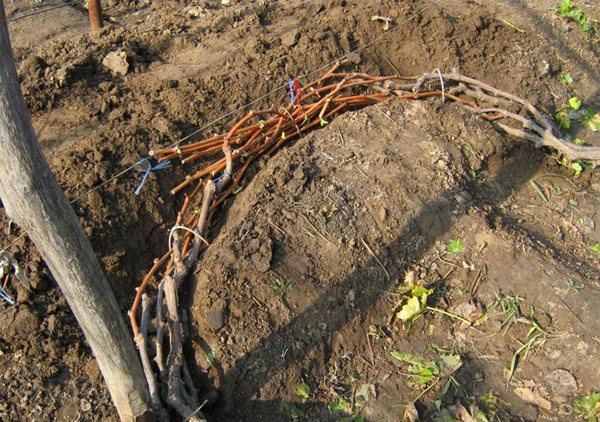

In the Moscow region, experienced winegrowers prune at the onset of the first frost, but at a temperature not lower than -3 ° C. This is necessary so that the vine, after the bunches have been removed, rest for some time and accumulate nutrients for a safe wintering. Pruning earlier will make the plant more vulnerable to the winter cold.
The preparation of the vine itself is simple and does not require special skills and effort. After the weak shoots are cut off and the plant is treated with fungicidal preparations, the vine must be removed from the trellis, rolled into a circle and laid in a planting hole, sprinkled with sawdust or peat on top.
You can insulate the grapes with fresh green needles, spruce branches - all this grows extensively in the Moscow region, so there should be no problems with shelter. Warming should be carried out in dry weather, so that the vine does not begin to rot under the cover. It is imperative that you first remove all the fallen leaves between the bushes.
In the Urals
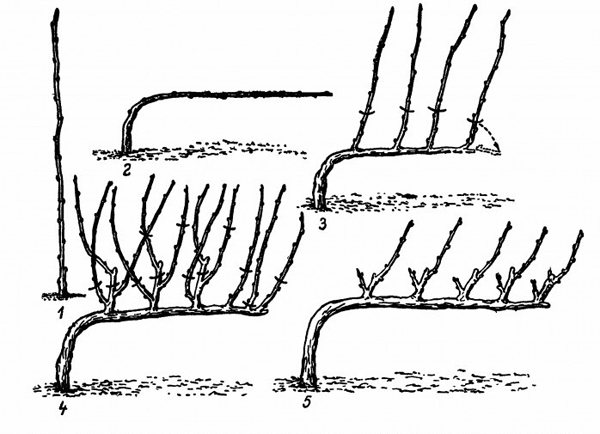

In the Urals, pruning of the vine (and harvesting of cuttings) is carried out, as elsewhere, after the plant has shed all the leaves.Autumn pruning of grapes is more appropriate in this region than spring pruning, because not only reorganization is important here, but also the correct formation of the bush: the so-called "sleeve scheme" of pruning will allow you to easily and correctly lay the vine and properly cover it from the harsh winter frosts. The fruit-bearing vine is removed completely, as well as the unripe one.
Advice from experienced winegrowers: to determine the degree of ripening of the vine, it is enough to wait until the air temperature is close to zero, and hold your hand over its surface.
In Siberia
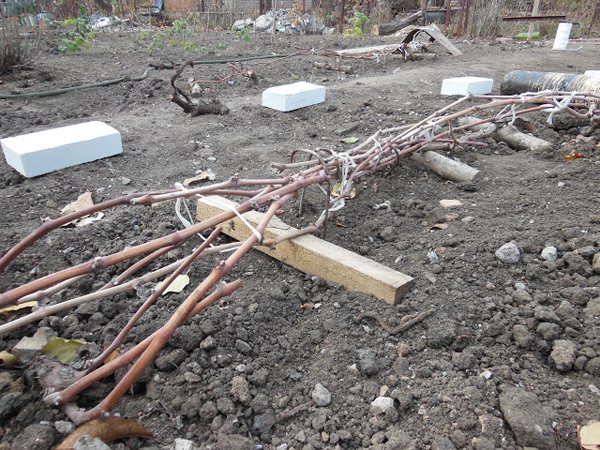

Siberian frosts require particularly careful winter insulation after pruning. Therefore, this event must be carried out in the fall: a non-compact "uncut" bush does not overwinter well, so it is better not to transfer pruning to the spring.
As soon as the leaf falls (and this will happen in September-early October), it is necessary to cut off all the unripe vine - it still will not overwinter, leaving the ripe in the right amount. From it, if necessary, cuttings are also cut, which will overwinter, and will be planted in the spring.
In the Leningrad region


It is correct to do pruning after frosts of -5-7 ° C are established within 2-3 days, this time is the most favorable, after the grapes are harvested in the first half of October (the last bunches are removed on October 15-17) and fall off foliage. With the help of trimming, a die-free fan molding is performed.






